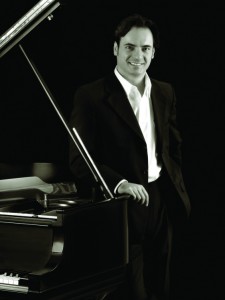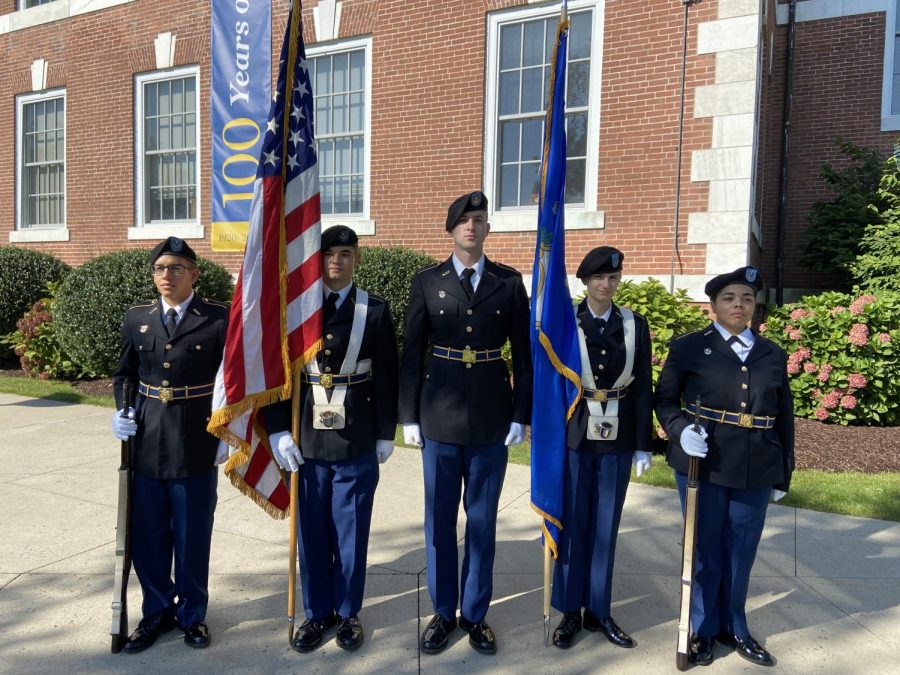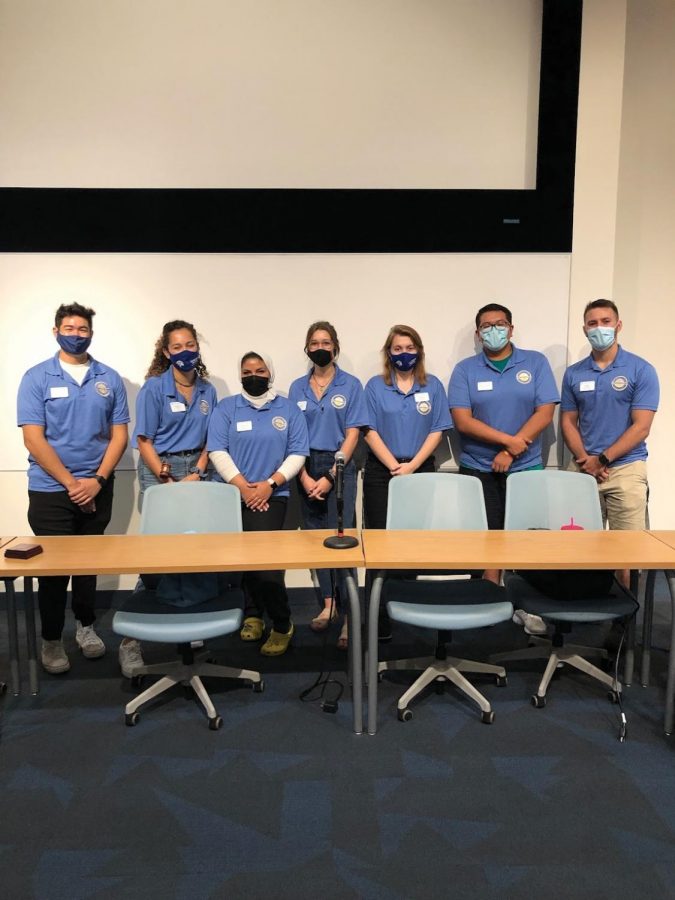By VICTOR MARKIW
CONTRIBUTING WRITER
The Music Department of the University of New Haven presented on March 24, 2012 a program of post-1800 works by Beethoven,

- The Music Department of the University of New Haven presented on March 24, 2012 a program of post-1800 works by Beethoven, Brahms, and Mussorgsky performed and interpreted by noted pianist José García-León.
Brahms, and Mussorgsky performed and interpreted by noted pianist José García-León. Prior to each piece, Mr. García-León educated the audience on the work itself as well as delving into the psychological state of the composer when the piece was written, thus adding insights touching upon both the music and their respective composers while enhancing the audience’s perspective, knowledge, and enjoyment.
The first piece chosen was Ludwig van Beethoven’s (1770-1827) “Moonlight” Sonata (written in 1801). Mr. García-León explained how this work foreshadowed the qualities of music from the Romantic period as well as revealing how this sonata (with the title Sonata quasi fantasia) is unique due to its slow first movement that contrasts with its third and final movement, which provides a typical classical fast tempo closure consistent with the period’s sonata form. Mr. García-León also pointed out that Beethoven’s growing deafness during this period in all probability influenced the introspective tenor of the piece.
The first movement was performed in an ideal tempo as Mr. García-León sustained the long bass lines in an organ-like manner and finely projected the main melody while masterfully providing the sustenuto triplet undercurrent that permeates this movement. The effect was a hypnotic interweaving of three melodies that the pianist projected as one succinct entity, never broaching the highest dynamic level penned by Beethoven (mezzo forte). The second movement was played with ethereal sweetness with a touch of brightness between the darker outer movements. The third movement, a ferocious presto agitato, was performed with a drive and intensity that Mr. García-León provided with the necessary sharp sforzando accentuation and a focus leading to the end-trajectory with its cascading arpeggios. Despite the multitude of rapid arpeggios and alberti bass figuration, the pianist made every note audible and did not lose the music’s visceral drive.
The Brahms Intermezzo in A-Major (No. 2) from the Op. 118 set was an intimate, tender rendition. Mr. García-León sang out the primary melody but also provided excellent balance of inner-voice counterpoints while expressing the tender vision Brahms penned. Mr. García-León went on to perform effortlessly Book I of the challenging Brahms Paganini Variations and articulated double notes, while maintaining the same tempo from the theme and each variation that followed. Often, tempos are accelerated or slowed, but Mr. García-León remained disciplined in maintaining the theme’s tempo while never sounding mechanical. The ultra-rich romanticism, thick counterpoints, dynamic contrasts, and well-used pedal were masterfully delivered by Mr. García-León as he treated the music, which is remarkably deep, despite its association with Paganini, with a seriousness of presentation.
The second half of the program featured the original version of Modest Mussorgsky’s colossal Pictures at an Exhibition, arguably the greatest Russian piano work ever written. Mr. García-León discussed the work before performing it and kindly supplied the titles of each piece on an overhead screen to aid the audience in following the “program” as the work unfolded. The pianist’s diverse and sublime interpretations consistently held together and captivated the audience: the gruff, self-portrait of Mussorgsky, found throughout the work in the Promenade sections; the mischievous Gnomus (a nutcracker) scurrying around with its crooked legs before its quick exit; the tender and evocative performance of the Il veccio castello (The Old Castle from Medieval times), in which Mr. García-León beautifully rendered the troubadour singing with lush accompaniment; the phenomenal image of the Polish Ox Cart (Bydlo), in which Mr. García-León confronts the listener with this monstrosity; the amusing Ballet of the Unhatched Chicks; Mr. García-León’s ability to portray the quarrel between two Jews, one rich and one poor, in which Samuel Goldberg and Schmuÿle dissolved the moment as a piano counterpoint but enraptured the listener in a verbal exchange and the fantastic, boisterous image projected through the keys and disseminated in The Market Square at Limoges was a joy to hear.
The mysterious Catacombs played with an air of enchantment followed by cum mortuis in lingua mortua (with the Dead in a Dead Language) was steely in its content and made the audience sense something brutal lay ahead. This brutality was rendered by Mr. García-León’s terrifying rendition of the penultimate piece, Baba Yaga (The Hut on Hen’s Legs), with the witch’s flight led by a brilliant passage, to the culminating piece of this work, The Great Gate of Kiev (the Ancient Capital). Mr. García-León’s majestic rendition of this final piece in which Hartmann designed a monumental gate for Tsar Alexander II to commemorate the monarch’s narrow escape from an assassination attempt on April 4, 1866, was, indeed, a monumental closure to this fantastic masterwork.
For an encore, Dr. García-León performed Spanish Dance (Andaluza) by Granados, which is the most famous of the entire collection of Spanish dances Granados wrote. The piece offers a musical portrait of the dreamy Andalucían nights, displaying the rhythmical pulses of a Spanish dance in the flamenco style. Through his spectacular interpretation, Dr. García-León transported his audience to southern Spain where the movements and scents briefly came to life as this magnificent concert came to an end.










